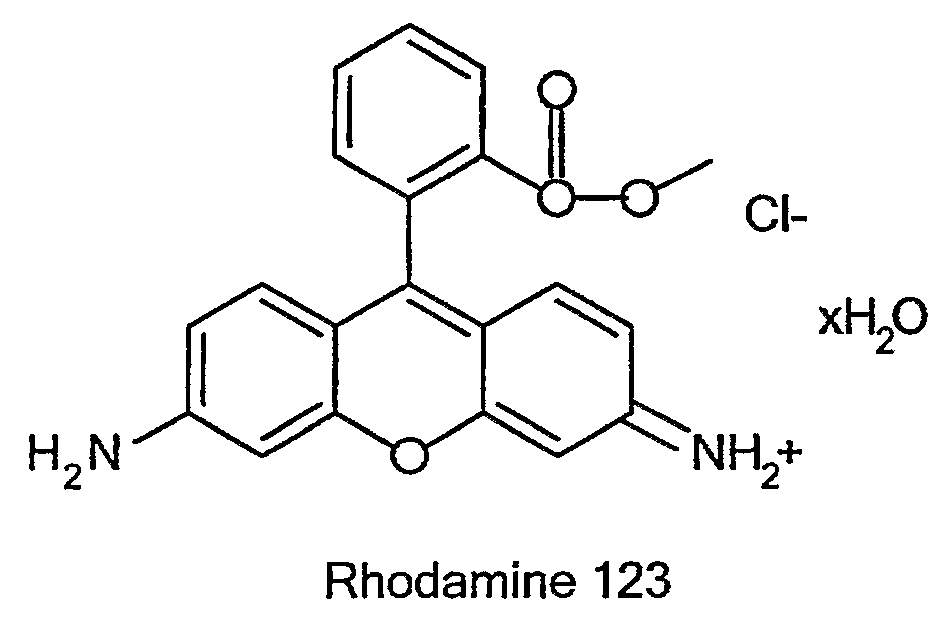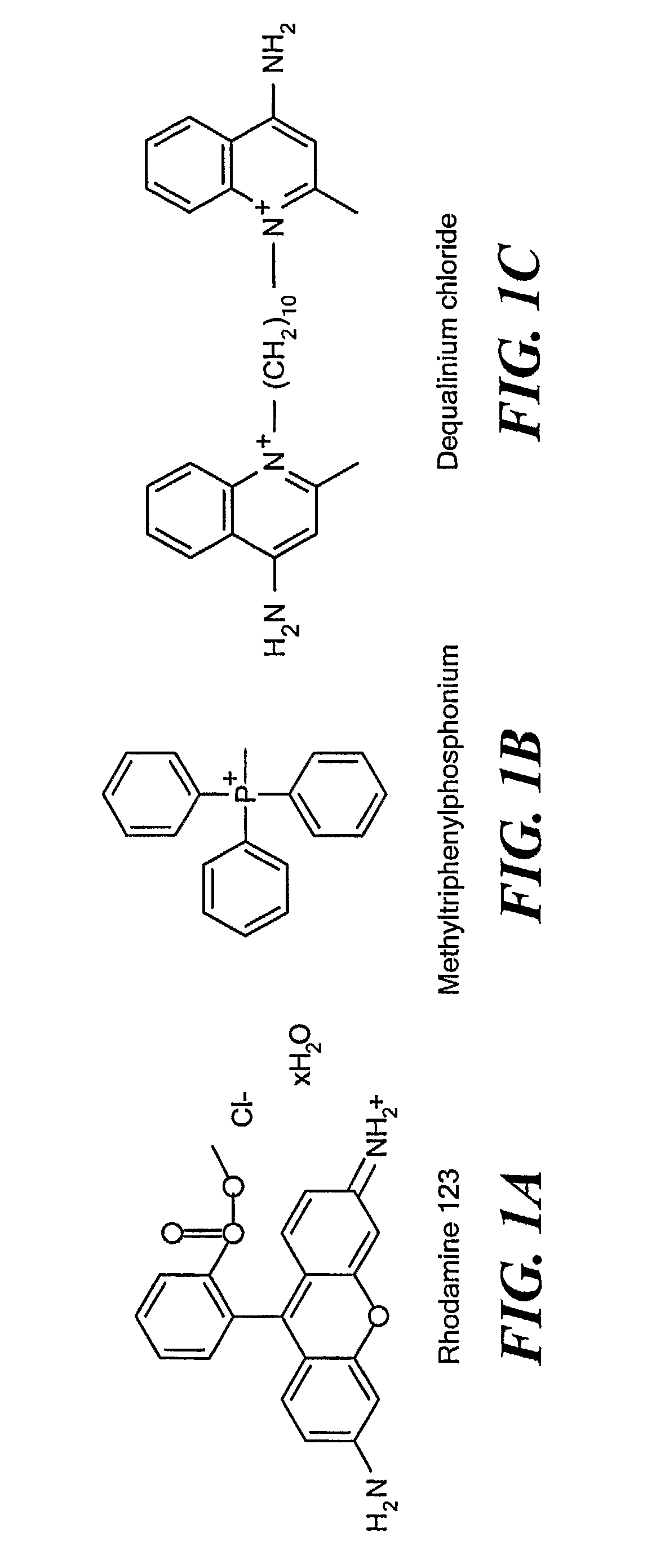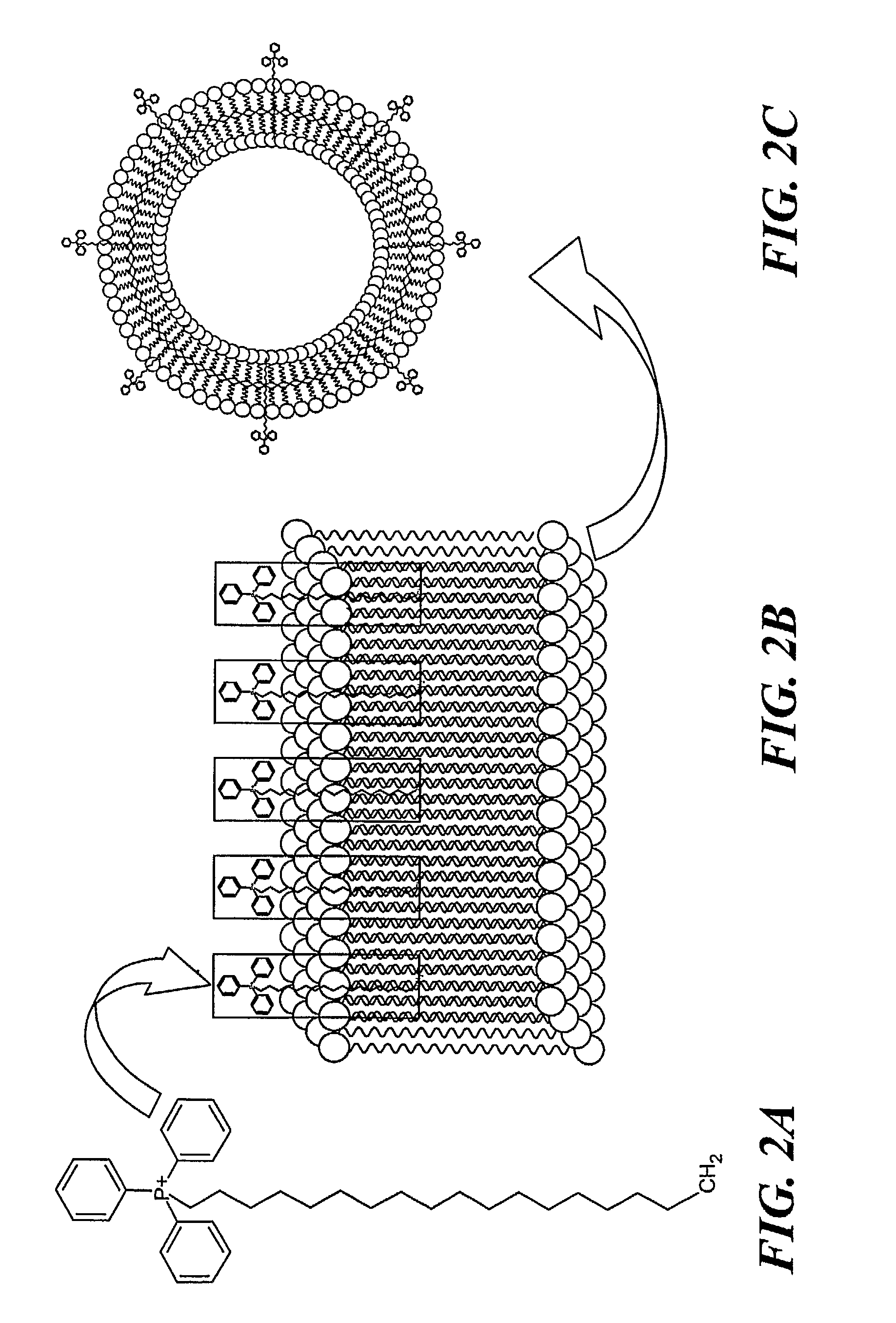Mitochondriotropic Phospholipid Vesicles
a phospholipid vesicles and mitochondria technology, applied in the field of mitochondrial phospholipid vesicles, can solve the problems of not being addressed, familial deafness and some cases of alzheimer's disease, and achieve the effect of protecting mitochondria and slowing down the natural aging process
- Summary
- Abstract
- Description
- Claims
- Application Information
AI Technical Summary
Benefits of technology
Problems solved by technology
Method used
Image
Examples
example i
Synthesis and Characterization of the Bromide Salt Containing Stearyl-Triphenylphosphonium Cation as a Hydrophobized Amphiphilic Delocalized Cation According to the Invention
[0035] Stearyl-triphenylphosphonium bromide (according to FIG. 2A) was synthesized by heating stearyl bromide and triphenylphosphine (FIG. 1B) under reflux in xylene according to a protocol for the synthesis of analogous tertiary phosphonium salts (see, Materials and Methods). Isolation by column chromatography on silica gel and recrystallization from diethylether yielded a chromatographically pure product, which was identified by 1H-NMR as described in Materials and Methods. FIG. 3 shows the 31P-NMR spectrum of STPP. The observed 31P chemical shift of STPP is at 25.34 ppm, well within the range of 20.9-26.2 ppm as described for a series of alkyl- and aryl triphenylphosphonium salts (Kiddle, 2000). In comparison, the 31P chemical shift of triphenylphosphine was found to be −4.48 ppm, which is in perfect agreeme...
example ii
Preparation and Characterization of Liposomes According to the Invention with Surface-Linked Triphenylphosphonium Cations
[0036] The preparation of liposomes in the presence of hydrophilic molecules that have been hydrophobized via linkage to fatty acid or phospholipid derivatives results in the covalent “anchoring” of the hydrophilic moiety to the liposomal surface. Liposomes according to the invention were prepared in the presence of STPP according to standard protocols (Lasch et al., 2003). FIG. 2B shows schematically the alkyl (i.e., stearyl) residue mediated “anchoring” of the triphenylphosphonium cation in the liposomal phospholipid bilayer membrane. STPP liposomes, i.e., liposomes with surface-linked triphenylphosphonium cations, were isolated using a Sephadex G-15 column and characterized by 31P-NMR (FIG. 4), size distribution analysis (FIG. 5) and zeta potential measurements (FIG. 6).
[0037] As expected (see, FIG. 4), the 31P-NMR spectrum of STPP-liposomes shows two chemica...
example iii
Intracellular Distribution of STPP Liposomes
[0038] To study the cellular uptake and intracellular distribution of STPP liposomes, cells of the breast cancer cell line BT 20 were incubated with fluorescence-labeled STPP liposomes for 1 h in serum-free medium. To remove non-internalized liposomes, cells were thoroughly washed and allowed to grow for another hour in complete medium. Typically obtained epifluorescence microscopic images are shown in FIGS. 7A and 7B. FIG. 7A displays cells incubated with STPP liposomes that have been labeled by incorporation of 0.5 mol % Rhodamine-PE, while FIG. 7B shows cells, the mitochondria of which have been specifically stained with Mitotracker red. On comparing FIG. 7A with FIG. 7B, it can be seen that cells incubated with STPP liposomes display the same distinct fluorescence pattern as cells stained with the mitochondria-specific dye. Such a comparison of staining patterns has been used by Filipovska et al. (2004) to reveal the localization of l...
PUM
| Property | Measurement | Unit |
|---|---|---|
| Amphiphilic | aaaaa | aaaaa |
| Solubility (mass) | aaaaa | aaaaa |
| Hydrophilicity | aaaaa | aaaaa |
Abstract
Description
Claims
Application Information
 Login to View More
Login to View More - R&D
- Intellectual Property
- Life Sciences
- Materials
- Tech Scout
- Unparalleled Data Quality
- Higher Quality Content
- 60% Fewer Hallucinations
Browse by: Latest US Patents, China's latest patents, Technical Efficacy Thesaurus, Application Domain, Technology Topic, Popular Technical Reports.
© 2025 PatSnap. All rights reserved.Legal|Privacy policy|Modern Slavery Act Transparency Statement|Sitemap|About US| Contact US: help@patsnap.com



